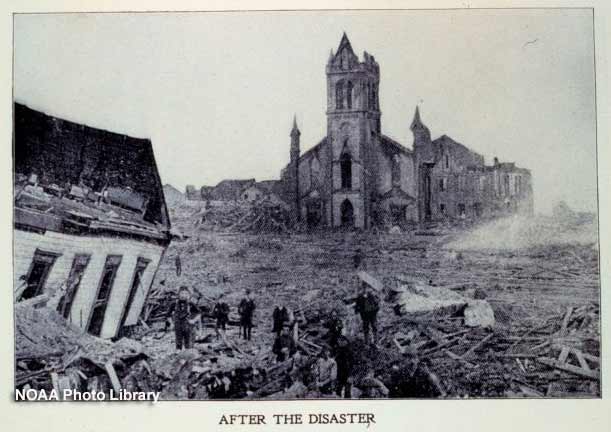Hurricane History: Texas a Top Target

Florida and Louisiana have had an unfair share of hurricane activity these past four years while Texas has generally taken less of a beating.
That could change this week as powerful Hurricane Ike takes aim at the Lone Star State.
In fact, Texas has been in the crosshairs many times before and is second only to Florida among U.S. states in the number of direct hits from hurricanes.
It seems ages ago now, but it was just seven weeks back that Dolly struck southern Texas, knocking down trees and power lines and causing extensive flooding of low-lying areas. Preliminary damage estimates were put at $1 billion or more. In some isolated areas, rainfall reached 16 inches. But Dolly was not a major hurricane. Its peak wind gusts were around 100 mph, and its eye made landfall, on July 23, in a largely uninhabited area.
The big storm that defines the hurricane threat to Texas was the disaster that struck Galveston more than a century ago.
The great Galveston storm
Early on the evening of Sept. 8, 1900, a powerful Category 4 storm, with sustained winds of more than 130 mph, roared ashore at Galveston. Storm surges of 8 to 15 feet swamped the island and inundated other parts of the coast, according to a National Hurricane Center historical account.
Sign up for the Live Science daily newsletter now
Get the world’s most fascinating discoveries delivered straight to your inbox.
Half the homes on Galveston were swept away, according to NOAA, the hurricane center's parent organization. The storm left somewhere between 8,000 and 12,000 dead. Most of the deaths were due to the storm surge.
In the entire Atlantic Basin, only an October 1780 hurricane that killed 20,000 or so on Caribbean islands was deadlier.
Things were different back then. There were no satellites, of course, and no radar. Weather forecasts were less accurate and provided less warning time. The 1900 hurricane came in from the Caribbean, across the Gulf of Mexico, swooped up through Texas and across the Midwest before finally skirting Canada and shooting back into the Atlantic.
Warnings were issued by what was then known as the Weather Bureau. The real problem, according to a NOAA analysis: "Many didn't heed the warnings, preferring instead to watch the huge waves."
Personal account
The following account of the water's rapid rise comes from Isaac M. Cline, the senior Weather Bureau employee in Galveston at the time:
"By 8 p.m. a number of houses had drifted up and lodged to the east and southeast of my residence, and these with the force of the waves acted as a battering ram against which it was impossible for any building to stand for any length of time, and at 8:30 p.m. my residence went down with about fifty persons who had sought it for safety, and all but eighteen were hurled into eternity. Among the lost was my wife, who never rose above the water after the wreck of the building. I was nearly drowned and became unconscious, but recovered though being crushed by timbers and found myself clinging to my youngest child, who had gone down with myself and wife."
Cline floated with small group of other people for three hours until the water began to drop.
"We landed about 11:30 p.m., by climbing over floating debris to a residence on Twenty-eighth Street and Avenue P," he wrote.
Other major Texas storms
- In 2001, Tropical Storm Allison — not even a hurricane — stalled out and dumped nearly 37 inches of rain on the Port of Houston over a five-day period, according to the National Weather Service. It killed 22 people and was the costliest natural disaster in Houston's history.
- In 1983, Hurricane Alicia killed 21 Texans. Wind gusts of hurricane force in downtown Houston littered the streets with broken glass as windows broke in tall buildings.
- In 1961, massive Hurricane Carla whipped up peak winds of 175 mph. Only 46 Texas residents died, largely because about 250,000 people had evacuated.
- A 1919 hurricane came ashore south of Corpus Christi as a Category 3 on Sept. 14. The death toll is estimated at between 600 and 900 people, including more than 500 lost on ten ships that sunk or were reported missing.
Between 1900 and 2004, Florida was hit by a total of 64 hurricanes, Texas absorbed 38, and North Carolina took the brunt of 29.
- Natural Disasters: Top 10 U.S. Threats
- The 10 Worst U.S. Natural Disasters
- How Strong Can a Hurricane Get?
Robert is an independent health and science journalist and writer based in Phoenix, Arizona. He is a former editor-in-chief of Live Science with over 20 years of experience as a reporter and editor. He has worked on websites such as Space.com and Tom's Guide, and is a contributor on Medium, covering how we age and how to optimize the mind and body through time. He has a journalism degree from Humboldt State University in California.










